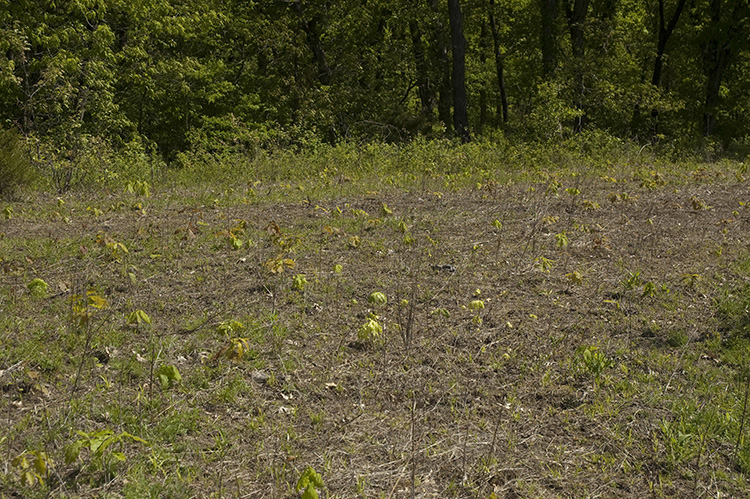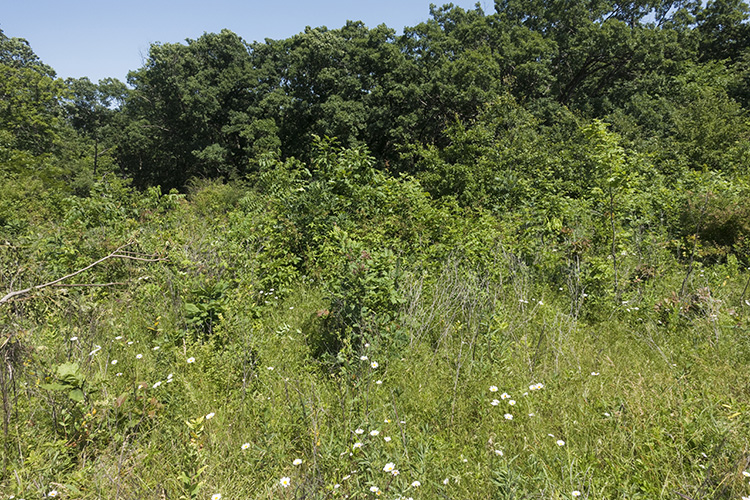Luke from IL asks,
Hi Bill, how's things going up at your new place? How's the land search going? Got a question for you about what to do with some crp acres I have. I enrolled these acres in 2010 into a "quail buffer strip" program. It was a 10 year program. I elected to not do the little bit of mowing they allow you to do after August 1st each year and just sort of let nature take its course. I'm not a quail hunter but that program fit for this particular area. It's between my ag field and a jagged edged block of timber. I had hoped not mowing it and letting it grow would in time turn it into some decent cover for the deer. So basically what I have now is a mixture of a few small volunteer maple and sycamore trees, briars, and some areas that are just grasses. So what do you think would be the thing to do at this point as far as being beneficial for the deer? I have the option to reenroll into a Prairie strip acres program but would most likely have to mow it all off and reseed it with an upland game seed mix. The briars are really starting to take over in some of the areas and I almost wonder if it's not too thick for the deer to move through. What would you do in this situation?
Bill responds,
Topic: What to do with Quail Buffer Acres:

This is what one of my better direct seeding areas looked like the spring after I planted it. You can see tons of really healthy looking young oak trees.
Luke,
I can tell you what I have done in that situation a number of times and I do believe that is what I would do again. I have done a lot of direct seeding of various tree species into these field edge buffers.
It takes about ten years for them to really take hold, but that becomes permanent habitat that deer will use readily. I am not sure that deer will use the weeds and buffer that result from the quail habitat program without letting nature run its course for many years (maybe a generation).
That is why I plant the acorns and walnuts myself to help nature along. Direct seeding of trees requires a good healthy supply of acorns in the early fall when the oaks are dropping them.
You can either gather them yourself at golf courses and city parks, etc. (places where the acorns are easily gathered) or you can pay a private forester to gather them for you. The key is to get them into the ground as soon after they fall from the trees as possible.
This is especially important with white oak, which are fall germinators.
Those white oak acorns will try to put down a root as soon as they can (as soon as they get any moisture at all). They can dry out and become non-viable quickly if not buried. I have done this three times over about 35 acres total. It worked really well on about 25 of those acres and the other ten had to be re-planted with bare root stock trees.

This is the same area ten years later. You can see that those trees really did great and are about six to ten feet tall. Once they get past the deer, they will grow about a foot per year and will become very effective deer habitat within about ten years.
The other ten acres didn’t have the right soil type and the seeding mostly failed. The ground was too wet for white oak and borderline too wet for red oak so I replanted that area to swamp white oak seedlings. I was super impressed with those swamp white oak trees. They are really cool little trees.
I like the nut seeding approach better than the planting of seedlings because you get a lot more sprouts and that means the deer aren’t as likely to wipe you out as they can when you plant rows of seedlings. Also, I don’t really like the rows to begin with. Feels too man made for me. I like the more natural distribution of the seeded areas.
If you do a search online for “Direct Nut Seeding” you will find some resources regarding how to do it. Much of it is stuff I created, but there are a number of more technical pieces put out by state agencies. The white paper I used for my seedings is no longer available online. Not sure why not, but it is gone, unfortunately. Here is the best one I can find right now. It covers most of the main points.
There may be programs within the CRP signup for planting trees in those acres. At the time I did it, there was a “Trees in CRP” program that supported that goal, but I am not sure that option still exists. I hope that helps. Good luck. (6/28/21)
